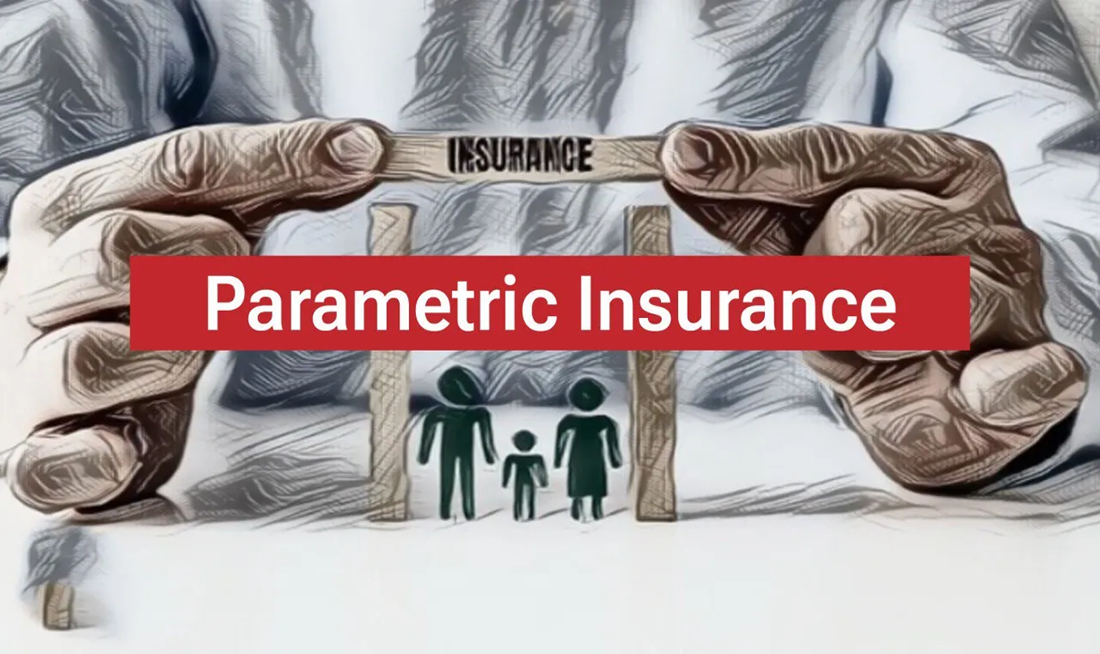What Is Parametric Insurance and Why It’s Gaining Ground This Year
Imagine you run a ski resort and a season passes by with hardly any snowfall. Your business takes a huge hit. Now imagine instead of waiting months to argue with your insurance provider, you get a payout automatically because weather data confirms snowfall was below a set threshold. That’s the power of parametric insurance, and in 2025, it’s becoming a game-changer across industries.
With climate change intensifying weather volatility, traditional insurance often falls short—delayed claims, complex assessments, and payout disputes are all too common. Parametric insurance is emerging as a faster, more efficient solution. It doesn’t require proof of loss, just proof that a measurable event occurred—like a hurricane above category 3 or rainfall below a certain level.
This post will dive into what parametric insurance is, how it works, why it’s growing in popularity in 2025, and who’s using it. We’ll also explore the benefits, challenges, and future potential of this evolving risk management tool.
What Is Parametric Insurance?
Parametric insurance is a type of policy that pays out when a specific event happens, based on a predefined parameter rather than the actual loss experienced. Unlike traditional indemnity insurance, which requires a detailed claims process and loss verification, parametric insurance uses objective data sources to trigger payouts. Think satellite imagery, seismic readings, or rainfall measurements.
For example, if a farmer buys a parametric insurance policy that covers drought, the payout is made once rainfall falls below a certain level during a specific timeframe—no need for damage assessment or paperwork. It’s all about speed, certainty, and transparency.
This model is particularly useful for catastrophic risks or events that are difficult or slow to assess. That includes natural disasters like earthquakes, floods, hurricanes, and droughts. But in 2025, we’re seeing parametric policies extend beyond natural catastrophes into sectors like travel, agriculture, and even crypto.
Why Parametric Insurance Is Booming in 2025
The growth of parametric insurance in 2025 is driven by a mix of climate, tech, and economic factors. As global temperatures rise and extreme weather becomes more frequent, industries are under pressure to find smarter, more agile risk solutions. Traditional insurance models often struggle to keep up, bogged down by slow claims processes and ambiguous outcomes.
On the tech side, the explosion of data analytics, remote sensing, and IoT devices makes it easier than ever to measure and verify specific triggers. Real-time weather stations, blockchain smart contracts, and satellite imagery provide the backbone for transparent, automated insurance solutions. This has made parametric policies more accurate and scalable than ever before.
Another major factor is financial inclusion. Parametric insurance is helping underserved markets—such as smallholder farmers in developing countries—access risk protection that was previously out of reach. It also allows for better planning and resilience, since payouts come quickly and can help businesses or communities bounce back faster.
How Parametric Insurance Actually Works
A parametric insurance policy has three core components: the triggering event, the threshold (or index), and the payout structure. First, the triggering event must be clearly defined and measurable. This could be wind speed during a hurricane, temperature thresholds, or even pandemic-related travel bans.
Next is the index—the agreed-upon threshold that determines when a payout is due. If the event exceeds or falls short of that benchmark, the payout is automatically triggered. For instance, a hospitality company might receive a payout if rainfall exceeds 300mm over a three-day period, disrupting peak tourist season.
Finally, the payout amount is predetermined, meaning the policyholder knows exactly what they’ll receive if the conditions are met. This eliminates the need for loss adjusters and speeds up the entire claims process.
Many parametric policies are also supported by third-party data providers to ensure fairness and accuracy. The use of independent data sources—often verifiable in real time—adds credibility and trust to the model.
Key Industries Embracing Parametric Insurance
In 2025, several industries are leaning heavily into parametric insurance because it solves unique pain points.
Agriculture is one of the biggest adopters. Farmers are exposed to unpredictable weather that can devastate crops. Parametric crop insurance helps them manage climate risks and stabilize income with quick payouts based on rainfall or temperature data.
Travel and tourism is another sector benefiting from this model. Airlines and travel companies are using parametric policies to cover weather delays, cancellations, and even pandemic-related disruptions. Travelers might receive instant compensation if flights are delayed due to a weather event, with no need to file a claim.
Renewable energy companies also use parametric insurance to mitigate risks from solar irradiance variability or wind inconsistency, which can impact output and revenue.
Even crypto mining operations are exploring parametric coverage against downtime from extreme temperatures or energy shortages. The model fits perfectly in an ecosystem that values automation and decentralization.
Benefits of Parametric Insurance Over Traditional Models
Speed is perhaps the biggest benefit of parametric insurance. Payouts can be delivered within days—or even hours—of an event occurring. This is especially valuable for businesses that rely on continuity and can’t afford delays.
Transparency is another huge advantage. Since payout conditions are agreed upon in advance and tied to objective data, there’s less room for disputes or denial of claims. Policyholders know exactly what to expect.
Scalability is also key. Parametric insurance can be applied to large portfolios of assets across multiple geographies without requiring individual loss assessments. That’s especially useful for global corporations or governments insuring public infrastructure.
Cost efficiency is improved too. Because there’s no need for adjusters or on-site inspections, administrative costs go down. This allows insurers to offer coverage to markets and sectors previously considered too risky or unprofitable.
Finally, parametric models encourage better disaster planning and resilience. Since the payout is rapid and reliable, policyholders can use the funds proactively—to repair, rebuild, or replant—before long-term damage sets in.
Challenges and Criticisms to Watch For
Despite the clear benefits, parametric insurance isn’t without challenges. The biggest concern is basis risk—the risk that the policyholder suffers a loss but doesn’t receive a payout because the trigger wasn’t met. For instance, if a storm destroys crops in one part of a region but the official weather station doesn’t record high enough wind speeds, the farmer might not get paid.
This mismatch between actual losses and parametric triggers can erode trust if not carefully managed. To address this, insurers are refining trigger models using hyper-local weather data and advanced analytics to minimize basis risk.
Another challenge is regulatory uncertainty. As parametric policies differ from traditional indemnity insurance, they may fall into legal gray areas. Regulatory bodies in some countries are still catching up with how to classify and oversee these types of policies.
Education is also a hurdle. Many businesses and consumers are unfamiliar with how parametric coverage works and may find the concept confusing or too technical. Insurers need to do a better job of simplifying and communicating these models.
Finally, while automated payouts are a huge plus, they also require trust in the accuracy and independence of third-party data providers. If the data is compromised or delayed, it could affect the reliability of the policy.
The Future of Parametric Insurance
Looking ahead, parametric insurance is poised to reshape how we think about coverage, especially in a world where climate risks and data availability are both increasing. As more use cases emerge—from protecting event organizers against bad weather to insuring smart cities against power outages—the flexibility of parametric models will continue to stand out.
We’re likely to see more blockchain-based parametric insurance platforms in the coming years. Smart contracts can automate payouts and ensure tamper-proof records, adding another layer of transparency and efficiency.
Another trend is customization at scale. With AI and big data, insurers can tailor policies to the micro-level—by zip code, by hour, or even by business type. That means more people and businesses can get coverage suited exactly to their risk profile.
In 2025 and beyond, parametric insurance won’t just be an alternative—it could become a mainstream model for insuring against everything from natural disasters to economic disruptions. It offers a forward-looking approach in a world that demands faster, fairer, and more predictable protection.
Conclusion
Parametric insurance is changing the landscape of risk management in 2025. By focusing on measurable events rather than complex damage assessments, it delivers speed, transparency, and resilience in ways traditional insurance can’t match. Industries from agriculture to energy to travel are already embracing it—and as technology advances, its reach is only growing.
Of course, it’s not a one-size-fits-all solution. Basis risk and regulatory gaps remain real challenges. But with the right safeguards and smarter modeling, parametric insurance offers powerful protection in an increasingly unpredictable world.
If you’re a business owner, investor, or policy planner, now is the time to explore how parametric policies could fit into your risk management strategy. Want to learn more or see if it’s right for your industry? Contact us today or drop your questions in the comments—we’d love to help you navigate this new frontier.

